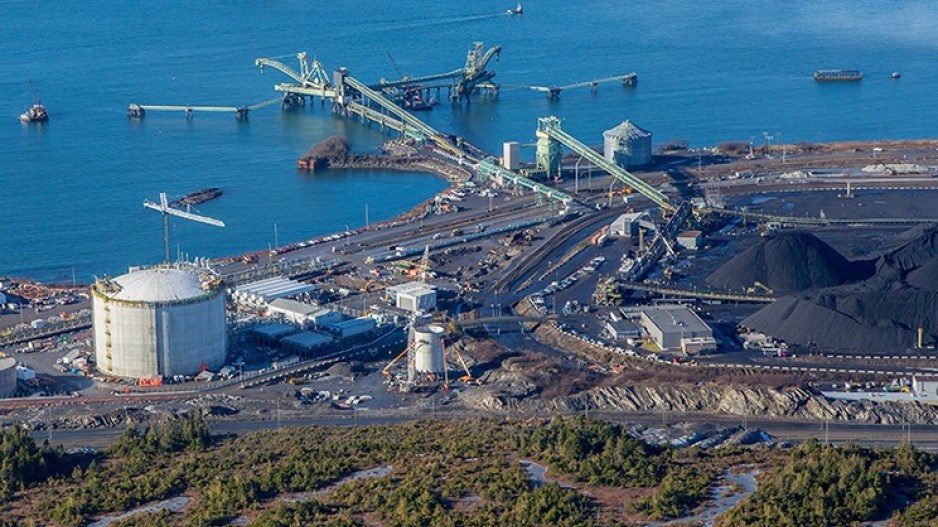A pandemic did little to slow the movement of resource sector exports through the Port of Prince Rupert in 2020. In fact, it had a banner year, with energy exports representing a sizeable chunk of the volume and value.
Activity at the Port of Prince Rupert is a bellwether for Northern B.C.’s economy, since it moves many of the commodities produced in Northern B.C., including metallurgical coal, forestry products, wood pellets and, more recently, propane.
Export volumes through the port increased 9% in 2020 over 2019.
“The Port of Prince Rupert had another record year in 2020,” Prince Rupert Port Authority CEO Shaun Stevenson said Tuesday morning during the first day of the three-day BC Natural Resources forum.
Normally held in Prince George, this year’s forum is being held virtually, due to the pandemic.
The forum got off to sketchy start Tuesday morning, with a live stream of the opening session plagued with freezes, raising some questions about whether Northern B.C. may still need more investments in Internet bandwidth and connectivity.
The glitch was eventually fixed in time for a panel on economic recovery.
While almost all businesses and resource industries across Canada have been affected by the pandemic in some way, Northern B.C. has weathered the pandemic better than other parts of Canada.
High commodity prices – including ”an unprecedented demand for lumber” -- and spending on several large multi-billion dollar mega-projects, such as the Site C dam, LNG Canada project and related Coastal GasLink pipeline have added significant economic stimulus to B.C.'s economy.
“Metallurgical coal set a record, volumes of wood pellets and new volumes of propane…are all parts of that success story,” Stevenson said. “It’s important to look at those cargoes as a proxy for economic stimulus.”
AltaGas Ltd. (TSX:ALA) marked the first full year of operation of its new propane export terminal at Ridley Island in Prince Rupert in 2020. The terminal allows natural gas produced in the Montney region of northeastern B.C. – which is rich in natural gas liquids liquids – to find its way to Asia in the form of propane.
“We should not lose sight of the fact that, according to most forecasts, B.C.’s economy continues to fare better than those in other provinces,” said Peter Zebedee, CEO of LNG Canada, whose partners are investing a total of $40 billion in an LNG plant in Kitimat, a new natural gas pipeline and upstream natural gas development in northeastern B.C.
“By all accounts, this is thanks to our incredible natural resources sector, and to major energy projects like LNG Canada, like Coastal GasLink, like TMX. These projects will help to backstop the provincial economy for many, many years to come.”
To date, LNG Canada has invested $3 billion in contracts and sub-contracts, Zebedee said. Close to $2.5 billion of that has gone to indigenous owned and local businesses, Zebedee said.
Hr cited HaiSea Marine as one example – a partnership between the Haisla First Nation and Seaspan ULC, which will build and operate escort and harbour tugboats for LNG Canada. That contract alone is worth $500 million.




